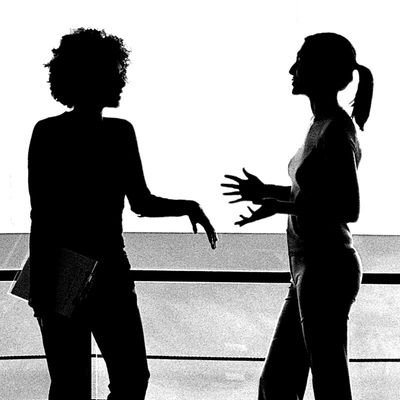
My hometown in Iowa is 90 percent white. So white that the Winslows and the Huxtables were the only black families I knew growing up. So white that Delhi Street is pronounced “Del-high.” So white that I, a pale girl of German-Irish descent who had never traveled farther than Kansas City, was once in charge of the Jamaica booth at my elementary school’s multicultural fair. I sang “Day-O” (belated apologies to Harry Belafonte), wore a Hawaiian-print shirt (even more apologies), and was interviewed on the local news about the value of multiculturalism.
There are a lot of things about my upbringing that I’ve left behind (tuna casserole leaps to mind). But despite the fact that I now live in a majority-minority city and count several people of color among my closest friends, percentage-wise my social circle has remained pretty damn white. In fact, the Public Religion Research Institute found that the average white person’s friend group is a whopping 91 percent white. We’re all living in our own private Iowa. “It’s not that I don’t think white people are unwilling to cultivate real friendships with black people,” writes Rebecca Carroll in The Guardian, “it’s that I don’t believe becoming close friends with black people occurs to them at all.”
But I know for a fact that it occurs to at least some of us. You know who we are. We obsessively followed the reports from Ferguson, and would, no question, tell a pollster that we believe the criminal justice system is biased against people of color. We’re white girls who make jokes about “white girls,” as if this category does not include us. We are proud to say we live in diverse cities — not the anodyne suburban enclaves and small towns of our upbringing. Yet our friends are mostly white. And we don’t feel great about it. Which raises a very thorny question: Should we actively try to make more friends who aren’t white? And if so, how?
When it comes to diversifying an overwhelmingly white workplace, there are reams of research and well-circulated best practices. Nobody argues that it’s easy, but nearly everyone at least pays lip service to the idea that it’s important to try. When it comes to your friend group, though, making a conscious diversity effort is fraught, to say the least. I’m a big advocate of actively courting people you want to befriend, yet making race a criteria seems not just problematic — especially if you’re a white person with few friends of color — but downright dehumanizing, almost as bad as having no diversity among your friends at all.
“It really bothers a lot of white women in particular when they’re seeing statistics about race. I think sometimes they want into a certain group or certain culture, and they’re very curious, and the only way to go about it is to befriend someone of another race,” says a friend of mine, who is black. “I definitely get courted hard-core. I walk into a new setting and someone’s like, ‘You’re going to be my friend.’ They’re pretty aggressive about it.”
You could call this sort of misguided effort the Pokemon approach — a “gotta catch ‘em all” point of view on friendship that’s less interested in befriending actual people than in the appearance of diversity and, often, an easy education about other cultures. (Cue micro-aggressive questions about hair braiding and slang.) “That has happened to most black people I know,” says a different friend of mine. “We are all ‘step off.’” Every once in awhile, such a targeted pursuit does end up turning into a genuine friendship. But if it does, it’s probably because of shared interests — not because people of color are dramatically different. They know who the Pixies are. They like craft cocktails, too.
It’s true that people form bonds based on having at least some shared interests and values and experiences. But for white people who are aware of the overwhelming whiteness of their friend group, there also has to be a willingness to step outside their comfort zone. Raquel Gutiérrez says she’s friends with “white people who are just self-flaggellatingly conscientious of how much space they take up. I’ve become friends with people who get it, and know when it’s good to talk and when it’s good to be quiet. And know how to comport themselves in ethnic-dominated spaces.” When these people say things like, “Our book club is really white. We need to outreach to more people of color,” Gutiérrez doesn’t think that’s a problem because they’re not looking to add a single, token friend. Odds are, they won’t look to that person as a stand-in for all nonwhite people.
“People of color generally have had to adapt to white people, because of existing societal power dynamics and also the numbers game,” says a friend who is South Asian–American. The reverse has not historically been true. Perhaps the best advice, then, for white people who want to befriend people of color is to adapt to them. Recognize and acknowledge those social power dynamics, not ignore them. And try to form a friendship based on the interests you do share.
“I feel lucky to be in a city and an industry where I meet people of different backgrounds and can choose to befriend them based on pure radness,” said a white friend of mine when I asked how her inner circle came to be as diverse as a college admissions brochure. “Honestly, your upbringing feels more foreign to me.”




